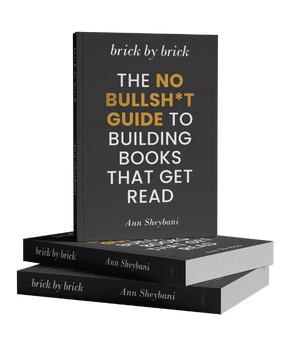Have you written a complete draft of a book, one with tons of bugs still in it? Are you wondering what comes next; what you’re supposed to do, specifically, during revision?
If you’ve written a book that doesn’t require a narrative arc—motivational, self-help, or how-to, to name just a few—revision will be relatively straightforward. The structure of your book is much less involved than a novel, say, or a memoir. You don’t have to keep the same characters moving in and out of your story, or create enough plot points to drive the momentum forward. You don’t have to worry about tying individual scenes together into one neat package. You’re dealing with teaching points, stories, and the balance between these two.
Read through your manuscript one chapter at a time. For each chapter, ask yourself the following questions:
1. What’s missing?
2. Is the teaching point unclear or nonexistent?
3. Is there a supporting story?
4. Does this story actually support that point?
5. In the story, does the narrative run flat? Do I need more sensory details, or a clear setting, or more dialogue?
Then, once you’re satisfied with your individual chapters, ask yourself what’s missing from the whole. Have you forgotten an important idea? Have you skipped over a vital step? Identify the hole; then sift through your Spare Brick Pile—the document you created to store everything you cut from your work– to see if you’ve got something that could fill that gap. Do you need to create something better from scratch? If so, do it.
Perhaps you’ve created some redundancies you weren’t aware of. Chapter seven and twelve say essentially the same damn thing. Sure, the supporting stories are different, but not the points. Can you harvest the best bits from each and build a single, stronger chapter? Or is it easier to keep one, and ditch the other? Make a decision and act.
You’ll also need to make sure you have a compelling introduction. We need to know who you are, why you’re offering us this information, and what it means for us, your readers. And at the end, you’ll need to draw a conclusion. What does the sum of your points equal? What, when it’s all brought together, does it mean? Why does it matter? How does it impact us?
Finally, read through the entire manuscript and decide if the thing feels satisfying, or falls flat as a pancake (cliché), which makes you want to slash at your wrists with a plastic fork. Go back in and fix what needs to be fixed.
In all likelihood, if your story feels lifeless you’ve forgotten about story. You must create feeling with things, images, and faces. That flat thing you may be sensing is the lack of emotion.
I love what author Richard Bausch says on this subject, and I’ll paraphrase: There is so much more in an image, a face, because that is how we experience the world. A good story is about experience, not concepts and certainly not abstractions. The abstractions are always empty and dull no matter how dear they may be to our hearts and no matter how profound we think they must be. Tell us about a person. Let us be with him or her as they experience the world. Get rid of all those places where you are commenting on things, and let the things stand for themselves. Be clear about the details that can be felt on the skin and in the nerves.
______________________________________________________________________
If you liked this little snippet, you’re going to love THE BOOK. Learn all of the dance steps you’ll need to master in order to write a powerful, publish-worthy book.
______________________________________________________________________


